harmony 鸿蒙Fixed Style Dialog Box
Fixed Style Dialog Box
The fixed-style dialog box uses a fixed layout format, so that you do not need to care about specific display layout details, and only need to enter text content that needs to be displayed, thereby simplifying a use process and improving convenience.
Constraints
The dialog box APIs are dependent on the UI execution context and should not be used in an unclear UI context. For details, see UIContext.
You can call UIContext or getUIContext to use the APIs described in this document, except CalendarPickerDialog, on non-UI pages or in some asynchronous callbacks. Operation not supported.
For showActionMenu and showDialog APIs, you must first call getPromptAction() in UIContext to obtain the PromptAction object, and then use the object to call the corresponding API.
For ActionSheet, AlertDialog, and PickerDialog APIs, except CalendarPickerDialog, you must first call getUIContext() in ohos.window to obtain the UIContext instance, and then use the instance to call the corresponding API. Alternatively, you can obtain a UIContext instance through the built-in method getUIContext() of the custom component.
The dialog boxes created using showActionMenu, showDialog, ActionSheet, or AlertDialog can be changed to a non-modal dialog box by setting its isModal attribute to false.
Action Menu (showActionMenu)
The action menu is implemented by obtaining the PromptAction object from the showActionMenu method in UIContext and then calling the showActionMenu API through this object. It can be used in callbacks or in classes you define.
After an action menu is created and displayed, the index of the selected button in the buttons array will be returned asynchronously as the response result.
import { PromptAction } from '@kit.ArkUI';
let uiContext = this.getUIContext();
let promptAction: PromptAction = uiContext.getPromptAction();
try {
promptAction.showActionMenu({
title: 'showActionMenu Title Info',
buttons: [
{
text: 'item1',
color: '#666666'
},
{
text: 'item2',
color: '#000000'
},
]
})
.then(data => {
console.info('showActionMenu success, click button: ' + data.index);
})
.catch((err: Error) => {
console.error('showActionMenu error: ' + err);
})
} catch (error) {
}

Common Dialog Box (showDialog)
The common dialog box is implemented by obtaining the PromptAction object from the getPromptAction method in UIContext and then calling the showDialog API through this object. It can be used in callbacks or in classes you define.
After a common dialog box is created and displayed, the index of the selected button in the buttons array will be returned asynchronously as the response result.
// xxx.ets
import { PromptAction } from '@kit.ArkUI';
let uiContext = this.getUIContext();
let promptAction: PromptAction = uiContext.getPromptAction();
try {
promptAction.showDialog({
title: 'showDialog Title Info',
message: 'Message Info',
buttons: [
{
text: 'button1',
color: '#000000'
},
{
text: 'button2',
color: '#000000'
}
]
}, (err, data) => {
if (err) {
console.error('showDialog err: ' + err);
return;
}
console.info('showDialog success callback, click button: ' + data.index);
});
} catch (error) {
}
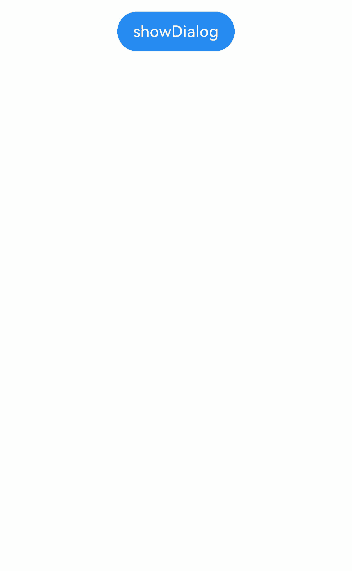
Picker Dialog Box (PickerDialog)
The picker dialog box is typically used to display specific information or options when a user performs certain actions, such as touching a button.
Lifecycle
The picker dialog box offers lifecycle functions to notify users about the dialog box’s lifecycle events. For details about the sequence in which the lifecycle events are triggered, see the API reference for each component.
| Name | Type | Description |
|---|---|---|
| onDidAppear | () => void | Event callback when the dialog box appears. |
| onDidDisappear | () => void | Event callback when the dialog box disappears. |
| onWillAppear | () => void | Event callback when the dialog box is about to appear. |
| onWillDisappear | () => void | Event callback when the dialog box is about to disappear. |
Calendar Picker Dialog Box (CalendarPickerDialog)
The calendar picker dialog box provides a calendar view that includes year, month, and weekday information, implemented through the CalendarPickerDialog API. You can call the show API to define and display the calendar picker dialog box.
You can also define custom button styles by configuring acceptButtonStyle and cancelButtonStyle.
// xxx.ets
@Entry
@Component
struct CalendarPickerDialogExample {
private selectedDate: Date = new Date('2024-04-23')
build() {
Column() {
Button("Show CalendarPicker Dialog")
.margin(20)
.onClick(() => {
console.info("CalendarDialog.show")
CalendarPickerDialog.show({
selected: this.selectedDate,
acceptButtonStyle: {
fontColor: '#2787d9',
fontSize: '16fp',
backgroundColor: '#f7f7f7',
borderRadius: 10
},
cancelButtonStyle: {
fontColor: Color.Red,
fontSize: '16fp',
backgroundColor: '#f7f7f7',
borderRadius: 10
},
onAccept: (date: Date)=>{
// Display the last selected date when the dialog box is shown again.
this.selectedDate = date
}
})
})
}.width('100%')
}
}
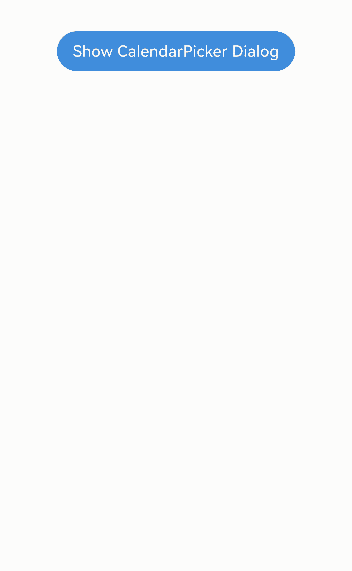
Date Picker Dialog Box (DatePickerDialog)
The date picker dialog box allows users to select a date from the given range, presenting the date information clearly.
You use the showDatePickerDialog API in UIContext to implement a date picker dialog box.
When lunarSwitch and showTime are set to true for the dialog box, it displays a switch for toggling the lunar calendar and time. When the check box is selected, the lunar calendar is shown. When the confirm button is touched, the dialog box returns the currently selected date through onDateAccept. To display the last confirmed date when the dialog box is shown again, reassign the value to selectTime in the callback.
@Entry
@Component
struct DatePickerDialogExample {
@State selectTime: Date = new Date('2023-12-25T08:30:00');
build() {
Column() {
Button('showDatePickerDialog')
.margin(30)
.onClick(() => {
this.getUIContext().showDatePickerDialog({
start: new Date("2000-1-1"),
end: new Date("2100-12-31"),
selected: this.selectTime,
lunarSwitch: true,
showTime: true,
onDateAccept: (value: Date) => {
this.selectTime = value
console.info("DatePickerDialog:onAccept()" + JSON.stringify(value))
},
})
})
}.width('100%').margin({ top: 5 })
}
}
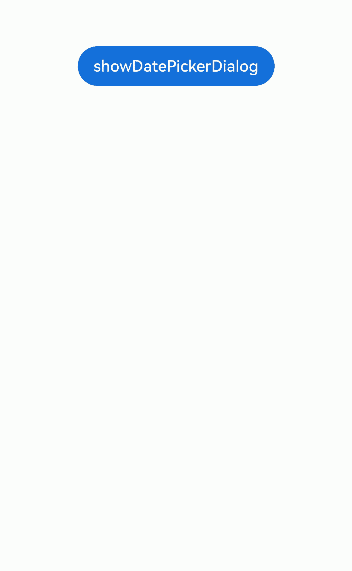
In this example, disappearTextStyle, textStyle, selectedTextStyle, acceptButtonStyle, and cancelButtonStyle are configured to customize the text and button style.
@Entry
@Component
struct DatePickerDialogExample {
@State selectTime: Date = new Date('2023-12-25T08:30:00');
build() {
Column() {
Button('showDatePickerDialog')
.margin(30)
.onClick(() => {
this.getUIContext().showDatePickerDialog({
start: new Date("2000-1-1"),
end: new Date("2100-12-31"),
selected: this.selectTime,
textStyle: { color: '#2787d9', font: { size: '14fp', weight: FontWeight.Normal } },
selectedTextStyle: { color: '#004aaf', font: { size: '18fp', weight: FontWeight.Regular } },
acceptButtonStyle: {
fontColor: '#2787d9',
fontSize: '16fp',
backgroundColor: '#f7f7f7',
borderRadius: 10
},
cancelButtonStyle: {
fontColor: Color.Red,
fontSize: '16fp',
backgroundColor: '#f7f7f7',
borderRadius: 10
}
})
})
}.width('100%').margin({ top: 5 })
}
}
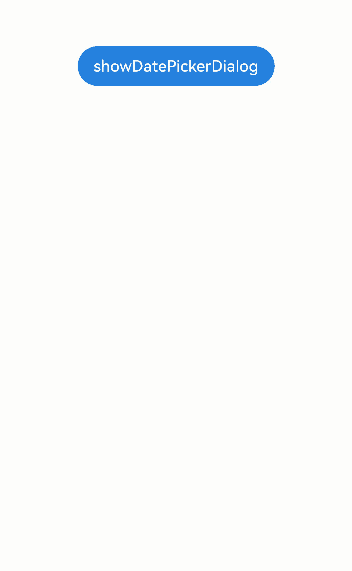
Time Picker Dialog Box (TimePickerDialog)
The time picker dialog box allows users to select a time from the 24-hour range, presenting the time information clearly.
You use the showTimePickerDialog API in UIContext to implement a time picker dialog box.
In this example, disappearTextStyle, textStyle, selectedTextStyle, acceptButtonStyle, and cancelButtonStyle are configured to customize the text and button style.
// xxx.ets
@Entry
@Component
struct TimePickerDialogExample {
@State selectTime: Date = new Date('2023-12-25T08:30:00');
build() {
Column() {
Button('showTimePickerDialog')
.margin(30)
.onClick(() => {
this.getUIContext().showTimePickerDialog({
selected: this.selectTime,
textStyle: { color: '#2787d9', font: { size: '14fp', weight: FontWeight.Normal } },
selectedTextStyle: { color: '#004aaf', font: { size: '18fp', weight: FontWeight.Regular } },
acceptButtonStyle: {
fontColor: '#2787d9',
fontSize: '16fp',
backgroundColor: '#f7f7f7',
borderRadius: 10
},
cancelButtonStyle: {
fontColor: Color.Red,
fontSize: '16fp',
backgroundColor: '#f7f7f7',
borderRadius: 10
}
})
})
}.width('100%').margin({ top: 5 })
}
}

Text Picker Dialog Box (TextPickerDialog)
The text picker dialog box allows users to select text from the given range, presenting the text information clearly.
You use the showTextPickerDialog API in UIContext to implement a date picker dialog box.
This example demonstrates how to implement a three-column text picker dialog box by setting the range parameter type to TextCascadePickerRangeContent[]. When the confirm button is touched, the dialog box returns the currently selected text and index value through the onAccept callback. To display the last confirmed text when the dialog box is shown again, reassign the value to select in the callback.
@Entry
@Component
struct TextPickerDialogExample {
private fruits: TextCascadePickerRangeContent[] = [
{
text: 'Liaoning Province',
children: [{ text: 'Shenyang', children: [{ text: 'Shenhe District' }, { text: 'Heping District' }, { text: 'Hunnan District' }] },
{ text: 'Dalian', children: [{ text: 'Zhongshan District' }, { text: 'Jinzhou District' }, { text: 'Changhai County' }] }]
},
{
text: 'Jilin Province',
children: [{ text: 'Changchun', children: [{ text: 'Nanguan District' }, { text: 'Kuancheng District' }, { text: 'Chaoyang District' }] },
{ text: 'Siping', children: [{ text: 'Tiexi District' }, { text: 'Tiedong District' }, { text: 'Lishu County' }] }]
},
{
text: 'Heilongjiang Province',
children: [{ text: 'Harbin', children: [{ text: 'Daoli District' }, { text: 'Daowai District' }, { text: 'Nangang District' }] },
{ text: 'Mudanjiang', children: [{ text: `Dong'an District` }, { text: `Xi'an District` }, { text: 'Aimin District' }] }]
}
]
private select : number = 0;
build() {
Column() {
Button('showTextPickerDialog')
.margin(30)
.onClick(() => {
this.getUIContext().showTextPickerDialog({
range: this.fruits,
selected: this.select,
onAccept: (value: TextPickerResult) => {
this.select = value.index as number
}
})
})
}.width('100%').margin({ top: 5 })
}
}
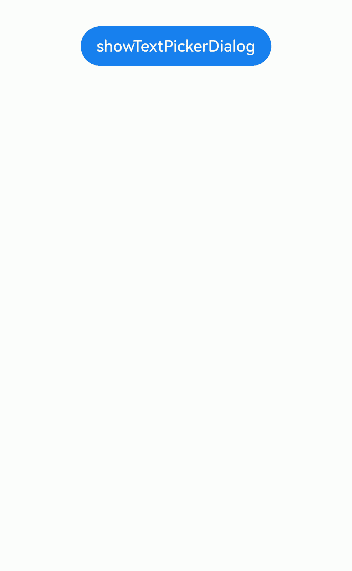
Action Sheet (ActionSheet)
The action sheet is ideal for presenting multiple action options, especially when the UI only needs to display a list of actions without additional content.
You use the showActionSheet API in UIContext to implement an action sheet.
This example shows how to configure the style and animation effects of the action sheet by setting APIs like width, height, and transition.
@Entry
@Component
struct showActionSheetExample {
build() {
Column() {
Button('showActionSheet')
.margin(30)
.onClick(() => {
this.getUIContext().showActionSheet({
title: 'ActionSheet title',
message: 'Message',
autoCancel: false,
width: 300,
height: 300,
cornerRadius: 20,
borderWidth: 1,
borderStyle: BorderStyle.Solid,
borderColor: Color.Blue,
backgroundColor: Color.White,
transition: TransitionEffect.asymmetric(TransitionEffect.OPACITY
.animation({ duration: 3000, curve: Curve.Sharp })
.combine(TransitionEffect.scale({ x: 1.5, y: 1.5 }).animation({ duration: 3000, curve: Curve.Sharp })),
TransitionEffect.OPACITY.animation({ duration: 100, curve: Curve.Smooth })
.combine(TransitionEffect.scale({ x: 0.5, y: 0.5 }).animation({ duration: 100, curve: Curve.Smooth }))),
confirm: {
value: 'OK',
action: () => {
console.info('Get Alert Dialog handled')
}
},
alignment: DialogAlignment.Center,
sheets: [
{
title: 'Apples',
action: () => {
}
},
{
title: 'Bananas',
action: () => {
}
},
{
title: 'Pears',
action: () => {
console.log('Pears')
}
}
]
})
})
}.width('100%').margin({ top: 5 })
}
}
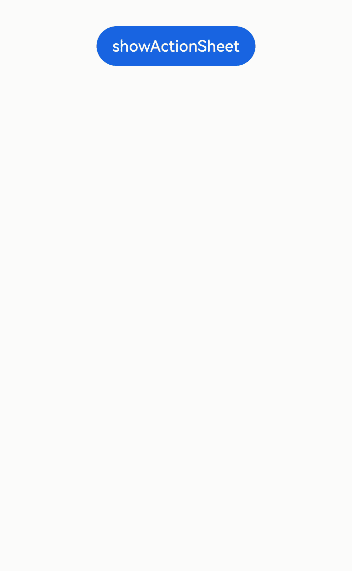
Alert Dialog Box (AlertDialog)
The alert dialog box is used when you need to ask a question or get permission from the user.
- The alert dialog box interrupts the current task. Therefore, only use it to provide necessary information and useful operations.
- Avoid using alert dialog boxes to provide information only; users do not like to be interrupted by information-rich but non-operable alerts.
You use the showAlertDialog API in UIContext to implement an alert dialog box.
This example shows how to configure the style and animation effects of an alert dialog with multiple buttons by setting APIs like width, height, and transition.
@Entry
@Component
struct showAlertDialogExample {
build() {
Column() {
Button('showAlertDialog')
.margin(30)
.onClick(() => {
this.getUIContext().showAlertDialog(
{
title: 'Title',
message: 'Text',
autoCancel: true,
alignment: DialogAlignment.Center,
offset: { dx: 0, dy: -20 },
gridCount: 3,
transition: TransitionEffect.asymmetric(TransitionEffect.OPACITY
.animation({ duration: 3000, curve: Curve.Sharp })
.combine(TransitionEffect.scale({ x: 1.5, y: 1.5 }).animation({ duration: 3000, curve: Curve.Sharp })),
TransitionEffect.OPACITY.animation({ duration: 100, curve: Curve.Smooth })
.combine(TransitionEffect.scale({ x: 0.5, y: 0.5 })
.animation({ duration: 100, curve: Curve.Smooth }))),
buttons: [{
value: 'Cancel',
action: () => {
console.info('Callback when the first button is clicked')
}
},
{
enabled: true,
defaultFocus: true,
style: DialogButtonStyle.HIGHLIGHT,
value: 'OK',
action: () => {
console.info('Callback when the second button is clicked')
}
}],
}
)
})
}.width('100%').margin({ top: 5 })
}
}
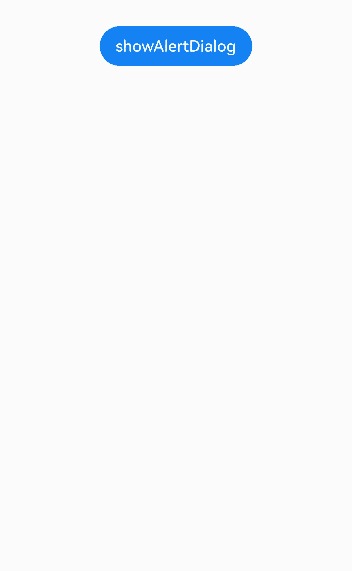
你可能感兴趣的鸿蒙文章
harmony 鸿蒙Atomic Service Full Screen Launch Component (FullScreenLaunchComponent)
harmony 鸿蒙Arc Button (ArcButton)
harmony 鸿蒙Frame Animation (ohos.animator)
harmony 鸿蒙Implementing Property Animation
- 所属分类: 后端技术
- 本文标签:
热门推荐
-
2、 - 优质文章
-
3、 gate.io
-
7、 openharmony
-
9、 golang